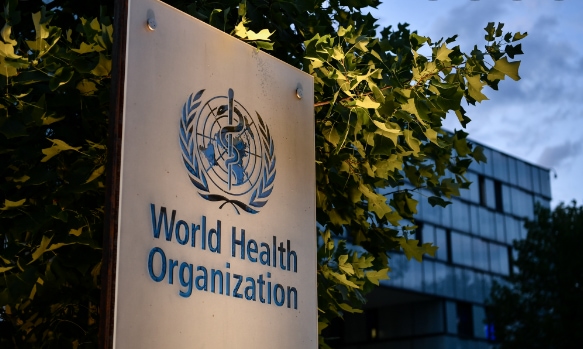By: WHO Media
Today the World Health Organization (WHO) joins advocates around the world to commemorate a landmark Day of Action for Cervical Cancer Elimination and welcome groundbreaking new initiatives to end this devastating disease, which claims the lives of over 300,000 women each year.
As with COVID-19, access to lifesaving tools is constrained, with women and adolescent girls in the poorest countries deprived of clinical screening facilities, human papillomavirus (HPV) vaccines and treatments which those in affluent places take for granted.
The disparity between deaths from cervical cancer in high-income compared with low-income countries tells a stark story, similar to that we have seen during the pandemic, with 9 in 10 deaths from cervical cancer happening in low and middle-income countries.
Over the last decade, manufacturers have tilted supply toward wealthier locations. In 2020, just 13% of girls aged 9-14 years globally were vaccinated against HPV – the virus that causes almost all cases of cervical cancer. Around 80 countries – home to nearly two thirds of the global cervical cancer burden – are yet to introduce this lifesaving vaccine.
During this special day, WHO’s Director-General Dr Tedros Adhanom Ghebreyesus, together with celebrities, First Ladies, cancer survivors and health and community organizations, will help raise awareness and mobilize action – one year after WHO launched its landmark global initiative to eliminate cervical cancer.
WHO is also highlighting important new breakthroughs to prevent and treat the disease, including the prequalification of a fourth vaccine (Cecolin from a third manufacturer, Innovax) for HPV, which is expected to increase and diversify vital vaccination supply.
“Cervical cancer causes immense suffering, but it’s almost completely preventable and, if diagnosed early enough, one of the most successfully treatable cancers,” said Dr Tedros Adhanom Ghebreyesus, WHO Director-General.
“We have the tools to make cervical cancer history, but only if we make those tools available to everyone who needs them. Together with our partners in the WHO cervical cancer elimination initiative, that’s what we aim to do.”
The risk of cervical cancer increases six-fold for women living with HIV, but many have not had access to vaccination or screenings.
Dr Tedros applauded countries that have adopted innovative ways to increase access to technologies and services that can stop cervical cancer during the COVID-19 pandemic.
In the past year, the HPV vaccine was introduced in seven countries – Cameroon, Cape Verde, El Salvador, Mauritania, Qatar, Sao Tome and Principe, and Tuvalu – bringing the total to 115.
Some countries trained healthcare workers with newer, portable devices to thermally ablate precancers. Others expanded the use of self-sampling for cervical abnormalities – endorsed in recently published WHO guidelines — to allow women to collect their own swab. This option can reduce stigma for women, provides access to those living far from health facilities, and helps congested health centres maintain safe services while respecting COVID-19 safety measures. The self-collected sample can be run on the same laboratory platforms that countries have been investing in to support PCR testing for COVID-19.
But setbacks have occurred. Access to screening services has fallen for many women and in a recent survey, 43% of countries reported disruption to cancer treatment. Meanwhile HPV vaccination rates globally fell from 15% in 2019 to 13% in 2020, amidst health service disruptions and school closures.
“There has been important progress towards cervical cancer elimination even over this unprecedented year,” said Dr Princess Nono Simelela, Special Advisor to the Director-General on Strategic Priorities, including Cervical Cancer Elimination.
“While we have seen major advances in new technologies and research, the critical next step is to ensure these are designed for and accessible in low- and middle-income countries, and that the health and rights of women and girls everywhere are prioritized in the recovery from COVID-19.”
New technologies, investments and research to aid the fight against cervical cancer
Adding to important milestones achieved over the course of the past year, today WHO is releasing new recommendations to guide research into artificial intelligence (AI)-based screening technologies. This first-of-its-kind guidance supports developers to bring cervical cancer screening into the future, and ensure pre-cancers are detected as early as possible.
The first designated “WHO Collaborating Centre for Cervical Cancer Elimination” was also announced at the University of Miami, which will be an important centre of research and technical assistance to help countries achieve targets for cervical cancer prevention and control.
The Day of Action will encompass a major global event and press availability, organized from WHO headquarters in Geneva. It will feature performances and remarks from cancer survivors and renowned artists such as Angelique Kidjo, as well as community efforts to promote vaccinations and screenings. 100 world monuments are being illuminated in teal – the colour of cervical cancer elimination – to mark the day, from the Temple of Heaven in Beijing to city skylines across Australia and Canada’s Niagara Falls.
“We have the tools and knowledge to eliminate cervical cancer. What we do with that is up to us,” said H.E. Neo Jane Masisi, First Lady of the Republic of Botswana, who is participating in the day’s events. “We can make choices that condemn women to a painful, avoidable death. Or we can prioritize their health, so that a future generation of women and their families look back with pride at the choices we made today.”
Several partners also announced important global commitments and investments during the day’s events.
WHO ‘s Global Strategy to Accelerate the Elimination of Cervical Cancer as a Public Health Problem was launched a year ago today and outlines three ambitious targets to be achieved over the next decade, including 90% girls getting vaccinated against HPV, 70% women screened for pre-cancerous lesions, and 90% of those who need it having access to treatment and palliative care. Together, these measures could reduce new cases of the disease by more than 40% and prevent 5 million related deaths by 2050.




